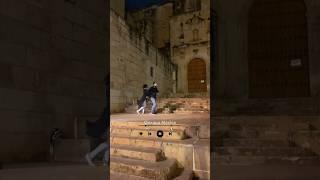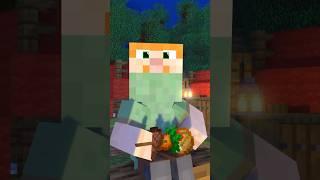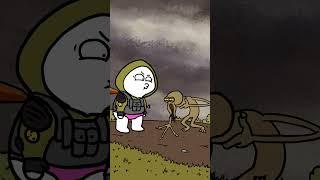
The History of North Lane, Milford, Derbyshire. Roman Road and Medieval Packhorse Route
Traders have been travelling around the British Isles ever since the Stone Age. While it is challenging to know exactly where they went, we have some archaeological evidence, the records of early mapmakers, and the writings of travellers themselves.
By referring to these and carefully observing the countryside, one can trace some old routes and enjoy magnificent walks. Archaeologists have found axes made from Derbyshire stone, flints, and Roman coins. I can assume that the best stones and flints from these areas were passed around and exchanged for hunting weapons, even before man started farming.
They would have been taken along paths, possibly animal tracks, which would have provided the most accessible routes through virgin forest, scrub or marshland soon after the last ice age, around 8000 BC. These primitive tracks developed as ridgeways, holloways, summerways and harroways.
The best example of a ridgeway in the Belper area of Derbyshire runs from Milford to Chevin and is called locally North Lane.
North Lane is a beautiful example of a holloway, a path that, as its name indicates, runs between deep banks. The cutting has been caused by the weight of men, animals, and carts gradually wearing away the rock as they traversed the same path over thousands of years. Summerways run along the contours of hills, usually on the southern slopes: they are easy to use in fine dry weather but may be impassable in winter.
Harroways From the Saxon, meaning mess or dirty and such routes were no doubt muddier than the ridgeway tracks. I can't say North Lane was a prehistoric trade route, but we know it was used by the Romans. While walking along the Lane a few years ago, I found a little stone figure buried beneath the foundations of the stone.
This figure, a possible representation of a presiding deity of that stretch of Lane, provides a fascinating insight into the spiritual beliefs of the early travellers, showing that the highway was sacrosanct from the earliest times and that travellers needed spirit protection. The earliest records of the county of Derby have to be gathered from writers of the period of the Roman occupation, and they are slim.
When the Roman emperors formed the central portion of England into the province of Flavia Csesariensis, Derbyshire was inhabited by a tribe called the Coritani, who also occupied the counties of Notts, Leicester, Lincoln, Rutland, and Northampton. The county was then very thinly populated and remained so for several centuries.
The towns, or rather villages, were few and far apart. Lead mines were worked, and the Romans transported the Lead on roads built by them. An excellent example of a Roman Road can be found between Milford and Belper, known locally as North Lane. You can still see the cart marks on the sandstone road.
The Roman road was used in the Middle Ages, and travel was slow, difficult, expensive, and dangerous. The 3-mile network would have been in disrepair and inadequately marked; the route would have dwindled into a track.
The weather was the biggest problem for medieval travellers. Only important travellers rode mounts, the rich or noble on horseback and clerics on mules. The rest went on foot. Long-distance travel was expensive.
Apart from the cost of transportation, food, and lodging, tolls and bribes were repeatedly demanded en route. Some travellers worked odd jobs or brought goods to trade along the way, while others begged.
Travellers who carried cash or valuables were highly vulnerable, for highwaymen and bandits infested the roads. Maybe this documentary includes the Romantics of knights slaying the bandits as they race down the banks onto the road. But evidence of coins and unusual markings in a piece of stone inserted into the drystone wall tells stories long gone of travellers using North Lane.
Music taken from the album "El Cid" by Miklós Rózsa; Symphonie-Orchester Graunke 1961
By referring to these and carefully observing the countryside, one can trace some old routes and enjoy magnificent walks. Archaeologists have found axes made from Derbyshire stone, flints, and Roman coins. I can assume that the best stones and flints from these areas were passed around and exchanged for hunting weapons, even before man started farming.
They would have been taken along paths, possibly animal tracks, which would have provided the most accessible routes through virgin forest, scrub or marshland soon after the last ice age, around 8000 BC. These primitive tracks developed as ridgeways, holloways, summerways and harroways.
The best example of a ridgeway in the Belper area of Derbyshire runs from Milford to Chevin and is called locally North Lane.
North Lane is a beautiful example of a holloway, a path that, as its name indicates, runs between deep banks. The cutting has been caused by the weight of men, animals, and carts gradually wearing away the rock as they traversed the same path over thousands of years. Summerways run along the contours of hills, usually on the southern slopes: they are easy to use in fine dry weather but may be impassable in winter.
Harroways From the Saxon, meaning mess or dirty and such routes were no doubt muddier than the ridgeway tracks. I can't say North Lane was a prehistoric trade route, but we know it was used by the Romans. While walking along the Lane a few years ago, I found a little stone figure buried beneath the foundations of the stone.
This figure, a possible representation of a presiding deity of that stretch of Lane, provides a fascinating insight into the spiritual beliefs of the early travellers, showing that the highway was sacrosanct from the earliest times and that travellers needed spirit protection. The earliest records of the county of Derby have to be gathered from writers of the period of the Roman occupation, and they are slim.
When the Roman emperors formed the central portion of England into the province of Flavia Csesariensis, Derbyshire was inhabited by a tribe called the Coritani, who also occupied the counties of Notts, Leicester, Lincoln, Rutland, and Northampton. The county was then very thinly populated and remained so for several centuries.
The towns, or rather villages, were few and far apart. Lead mines were worked, and the Romans transported the Lead on roads built by them. An excellent example of a Roman Road can be found between Milford and Belper, known locally as North Lane. You can still see the cart marks on the sandstone road.
The Roman road was used in the Middle Ages, and travel was slow, difficult, expensive, and dangerous. The 3-mile network would have been in disrepair and inadequately marked; the route would have dwindled into a track.
The weather was the biggest problem for medieval travellers. Only important travellers rode mounts, the rich or noble on horseback and clerics on mules. The rest went on foot. Long-distance travel was expensive.
Apart from the cost of transportation, food, and lodging, tolls and bribes were repeatedly demanded en route. Some travellers worked odd jobs or brought goods to trade along the way, while others begged.
Travellers who carried cash or valuables were highly vulnerable, for highwaymen and bandits infested the roads. Maybe this documentary includes the Romantics of knights slaying the bandits as they race down the banks onto the road. But evidence of coins and unusual markings in a piece of stone inserted into the drystone wall tells stories long gone of travellers using North Lane.
Music taken from the album "El Cid" by Miklós Rózsa; Symphonie-Orchester Graunke 1961
Тэги:
#arborglyph #Arborglyphs #dendroglyphs #silvaglyphsКомментарии:
The History of North Lane, Milford, Derbyshire. Roman Road and Medieval Packhorse Route
Roland 'Roly' Keates aka Lost Histories
Visit Oaxaca Mexico in 12 Seconds #travelinspiration #mexicotravel
Abundant Wanderlust
Amazing Places to visit in Mexico - Travel Video
Joyous Travel
Visit Tulum - Amazing place in Mexico #travel #mexicotravel
Unchased Travel
Pyramid Model Staff Buy-In Presentation Tutorial
Pyramid Model (NCPMI)
Заявки на юридические услуги, клиенты для юриста легко из соц сетей - научитесь продвижению с нами
БОГАТЫЙ ЮРИСТ Онлайн-школа Алсу Закировой
ADIVINHE O YOUTUBER DISFARÇADO! - NÍVEL EXTREMO
Matheus & Gi


























